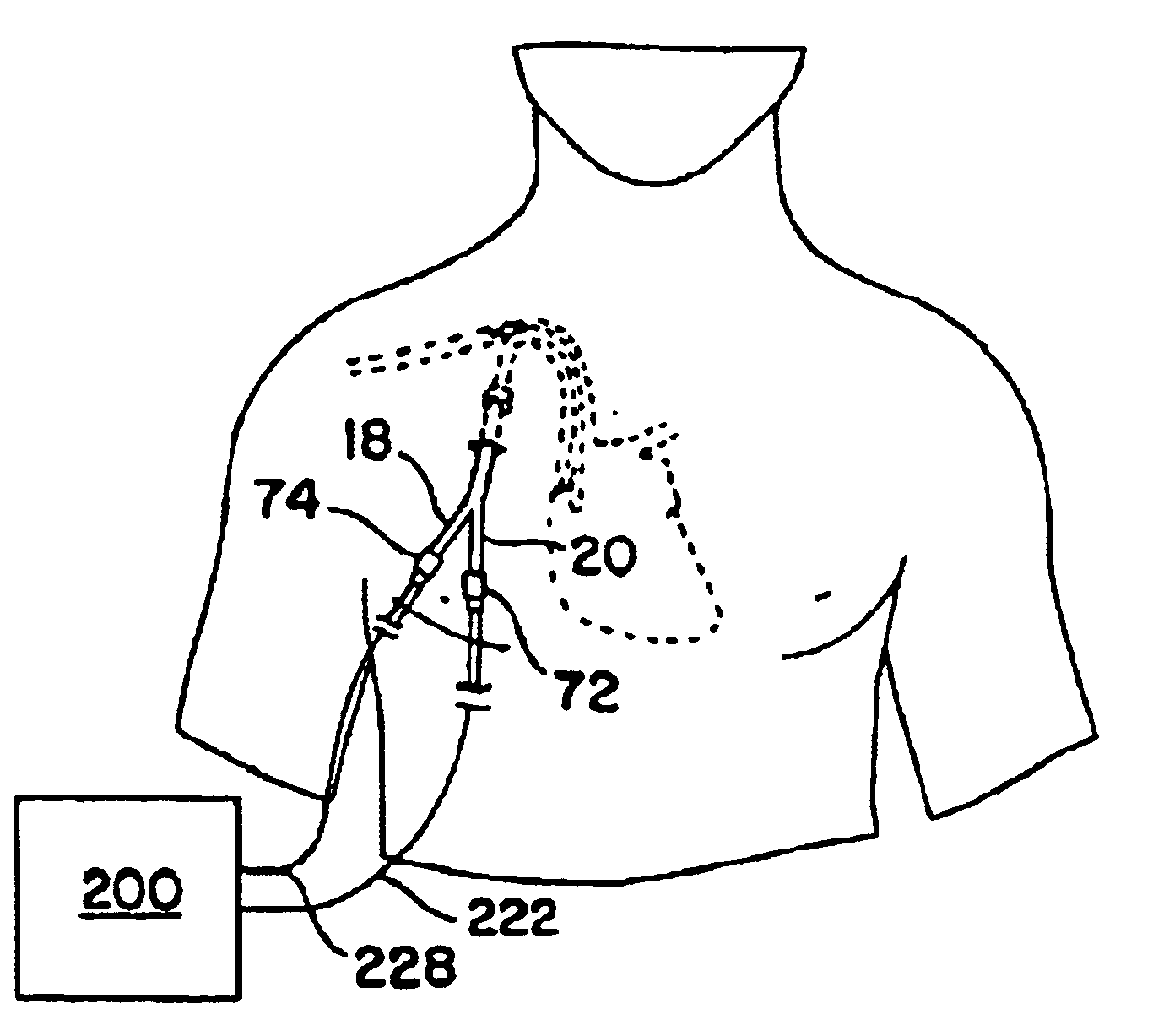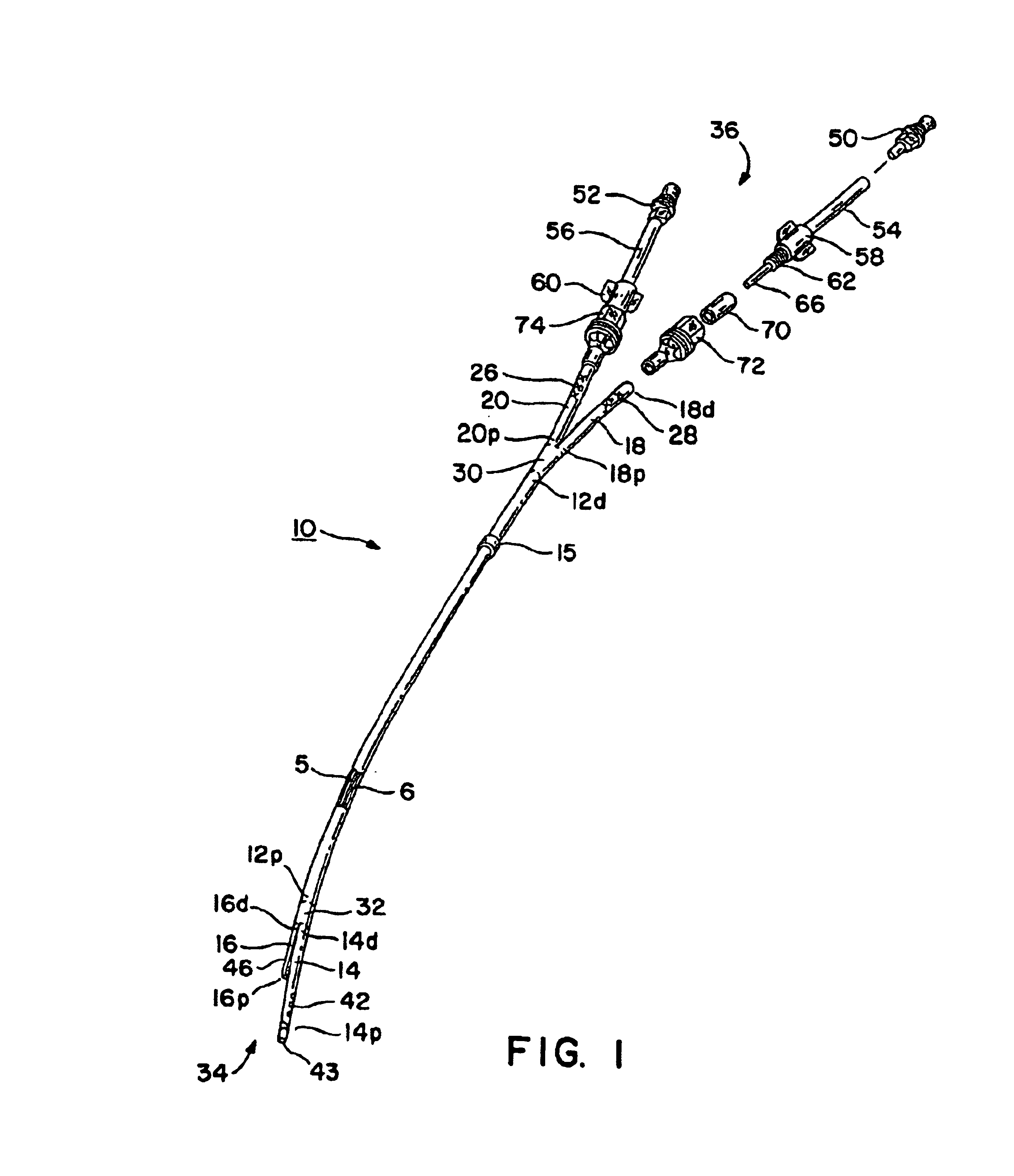Double-y-shaped multi-lumen catheter with selectively attachable hubs
a multi-lumen catheter and hub technology, applied in the field of medical devices, can solve the problems of inability to optimally place the catheter tip, lack of dialysis treatment effect, and lack of optimal placement of the catheter tip of the double lumen catheter
- Summary
- Abstract
- Description
- Claims
- Application Information
AI Technical Summary
Benefits of technology
Problems solved by technology
Method used
Image
Examples
Embodiment Construction
For the purposes of the following description and the claims appended hereto, the relative term “proximal” refers to those portions of a catheter and those portions of components of the catheter which are nearest the insertion end of the catheter, that is, the end of the catheter that is inserted into an area of a patient'as body being catheterized, such as a blood vessel. Conversely, the relative term “distal” refers to those portions of a catheter and those portions of components of the catheter which are farthest from the insertion end of the catheter.
FIG. 1 shows a double-Y-shaped multi-lumen catheter 10 according to the present invention. The catheter 10 includes a proximal end 34 for insertion into a patient, and a distal end 36 for connection to a fluid exchange device, such as a dialysis machine or the like. The catheter 10 includes an elongated, central, multi-lumen tube portion 12, a plurality of proximal single-lumen extension tubes 14, 16, and a plurality of distal singl...
PUM
 Login to View More
Login to View More Abstract
Description
Claims
Application Information
 Login to View More
Login to View More - R&D
- Intellectual Property
- Life Sciences
- Materials
- Tech Scout
- Unparalleled Data Quality
- Higher Quality Content
- 60% Fewer Hallucinations
Browse by: Latest US Patents, China's latest patents, Technical Efficacy Thesaurus, Application Domain, Technology Topic, Popular Technical Reports.
© 2025 PatSnap. All rights reserved.Legal|Privacy policy|Modern Slavery Act Transparency Statement|Sitemap|About US| Contact US: help@patsnap.com



